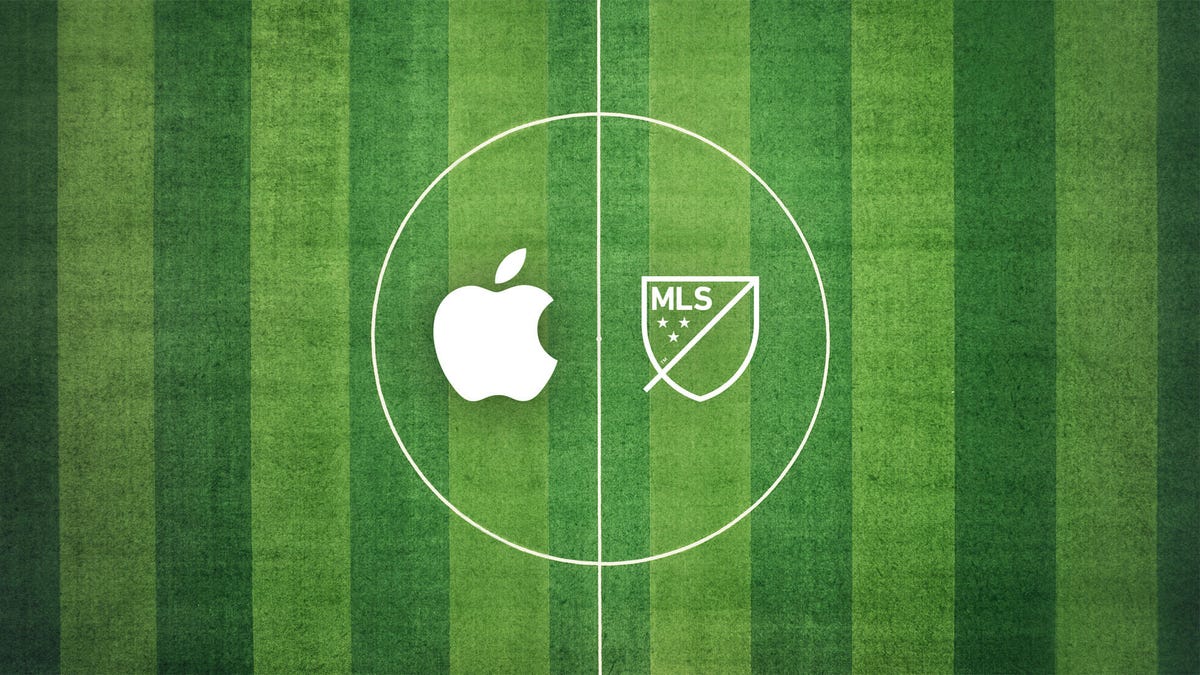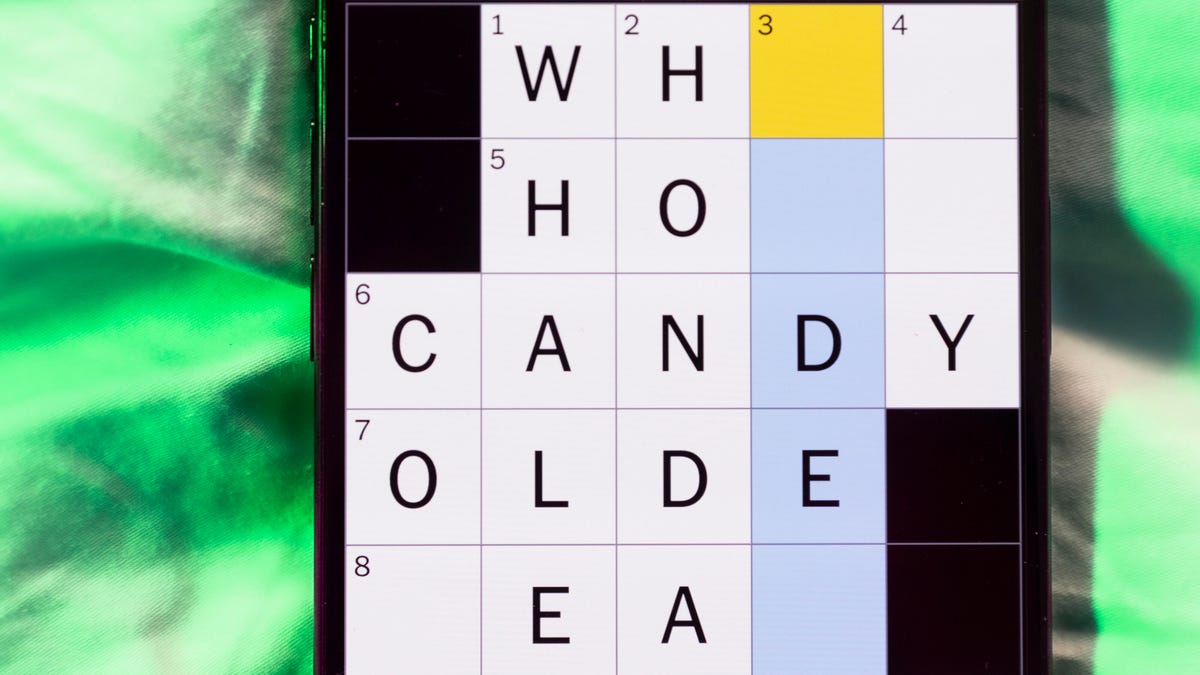Technologies
MLS Season Pass on Apple TV: How to Watch and Stream Major League Soccer in 2023
America’s top soccer league is underway for 2023 and Apple’s soccer service is the only way to catch all the action.

Apple’s sports ambitions have expanded beyond baseball. After broadcasting live MLB games on Friday nights last year, the home of Ted Lasso has begun a 10-year deal with Major League Soccer. Apple TV Plus will be the exclusive provider of every MLS game in the 2023 season, which continues this afternoon when LAFC hosts Portland in Los Angeles at 4:30 p.m. ET (1:30 p.m. PT).
The company’s new MLS Season Pass, which lets you watch on TVs, phones and other devices, costs $13 a month or $79 for the season if you’re already a subscriber to the Apple TV Plus streaming service. If you don’t subscribe to Apple TV Plus, the MLS Season Pass costs $15 a month or $99 for the season.
There are no blackouts for local games and no need to switch between different apps or channels to find different matches. With the exception of a handful of games that will also air on Fox and FS1, the only way to watch MLS games, Leagues Cup matches or games from MLS Next will be with Apple. And it’s not only available in the US: Soccer fans in over 100 countries can subscribe, including Canada, Mexico, the UK and Australia.
Here’s everything you need to know about how to watch Major League Soccer on Apple TV this year.
MLS on Apple FAQs
How much will MLS on Apple cost?
Apple will charge $13 a month for an MLS Season Pass to those who already pay for Apple TV Plus. Since an Apple TV Plus subscription costs $7 a month, the total monthly fee for subscribers is $20 per month.
If you aren’t an Apple TV Plus subscriber, the monthly rate will be $15 a month.
Soccer fans looking to save can get a full season for a one-time charge. It’ll cost $79 for Apple TV Plus members or $99 for those who don’t subscribe to the service.
Will there be free MLS games available?
Yes. Every week Apple will make six of its Saturday matches available for free without the need to sign up for an MLS Season Pass or for Apple TV Plus, though you will need to log in with an Apple ID, which you can set up for free.
A full schedule for MLS games, including which ones will be available for free, can be found on the MLS website.
Do I need Apple TV Plus to get an MLS Season Pass?
No, you don’t need to subscribe to the Apple TV Plus streaming service to get an MLS Season Pass. The two services are separate, but Apple TV Plus members do get a discount.
Do I need an iPhone, Mac or Apple TV box to watch Apple’s MLS games?
No, you don’t. Apple will offer its MLS Season Pass on numerous devices and platforms. That includes not only the company’s own gadgets and services but also TVs, phones, tablets and computers made by other manufacturers.
What devices do I need to watch Apple’s soccer games?
You can watch the games on any device that has the Apple TV app, including TVs, phones, tablets and computers. This includes iPhones, iPads, Apple TVs and Macs as well as smart TVs and streaming devices that run the Roku, Amazon Fire TV, Android TV and Google TV platforms.
If you have a game console, there’s an Apple TV app for Microsoft’s Xbox One and Xbox Series S and X, and Sony’s PlayStation 4 and PS5. Recent TVs from Samsung, LG, Sony and Vizio also have Apple TV apps. More details on supported devices can be found on Apple’s site.
Can I watch MLS games on Android, Chrome or Windows devices?
Yes. Although Apple does not have Apple TV apps for Android phones and tablets or Windows computers, it does let you stream its shows, and MLS games, using a web browser by going to tv.apple.com.
You will need to sign in to or create an Apple account to watch the games.
Are MLS games available on regular TV channels?
No. With the exception of a handful of games that will also air on Fox or FS1, these broadcasts are all exclusive to Apple, so you will not be able to watch them on your local regional sports network, your cable or satellite package or on a live TV streaming service.
Which announcers are calling the games?
Apple has lined up a slew of broadcast teams to call all games in English and Spanish. Games featuring Canadian teams will also be broadcast in French.
Full details on the broadcast crews can be found here.
Will the games stream in 4K?
No. Apple will broadcast MLS and Leagues Cup games in 1080p HD, not 4K. For audio, these contests will feature Dolby 5.1 sound.
Technologies
The Most Exciting Video Game Rumors and Leaks Ahead of 2026
Technologies
Today’s NYT Mini Crossword Answers for Wednesday, Dec. 17
Here are the answers for The New York Times Mini Crossword for Dec. 17.

Looking for the most recent Mini Crossword answer? Click here for today’s Mini Crossword hints, as well as our daily answers and hints for The New York Times Wordle, Strands, Connections and Connections: Sports Edition puzzles.
Need some help with today’s Mini Crossword? Read on. And if you could use some hints and guidance for daily solving, check out our Mini Crossword tips.
If you’re looking for today’s Wordle, Connections, Connections: Sports Edition and Strands answers, you can visit CNET’s NYT puzzle hints page.
Read more: Tips and Tricks for Solving The New York Times Mini Crossword
Let’s get to those Mini Crossword clues and answers.
Mini across clues and answers
1A clue: Nod (off)
Answer: DOZE
5A clue: Naval submarine in W.W. II
Answer: UBOAT
7A clue: Tricky thing to do on a busy highway
Answer: MERGE
8A clue: Heat-resistant glassware for cooking
Answer: PYREX
9A clue: Put into groups
Answer: SORT
Mini down clues and answers
1D clue: Break up with
Answer: DUMP
2D clue: Falls in line, so to speak
Answer: OBEYS
3D clue: Legendary vigilante who cuts a «Z» with his sword
Answer: ZORRO
4D clue: Rarin’ to go
Answer: EAGER
6D clue: Common reminder for an upcoming appointment
Answer: TEXT
Don’t miss any of our unbiased tech content and lab-based reviews. Add CNET as a preferred Google source.
Technologies
You Can Watch an Exclusive Avatar: Fire and Ash Scene on TikTok Right Now
Disney and TikTok partner on an immersive content hub for James Cameron’s latest movie about the alien Na’vi.
If you’re not quite ready to head to the theater to watch Avatar: Fire and Ash, an exclusive scene preview might sell you on the visual spectacle. As part of a new collaboration with the social media giant, Disney is posting snippets of its new movie to its TikTok account.
This scene isn’t part of any trailer and won’t be posted to other social media accounts, making TikTok the only place you can view it — unless you buy a movie ticket. A first look at the new movie’s scenes isn’t the only Avatar-related bonus on the social media platform right now, either. TikTok has partnered with the house of mouse to bring an entire «immersive content hub» to the app.
A special section of TikTok includes quizzes and educational videos that explore the alien world of Pandora shown off in the movies. On TikTok, you can take a personality quiz to find out what Na’vi clan you most closely align with and unlock a special profile picture border to use on your account.
Science and fiction blend together with a series of videos from real doctors who explain the basis for some of Avatar’s world-building. If you want to learn about exoplanets or how realistic the anatomy of the movie’s alien animals is, these videos will feed your brain while still providing entertainment value.
Perhaps the most enticing part of Disney’s latest social media collaboration is the opportunity for fans to win prizes and trips. TikTok creators who make edits with the #TikTokAvatarContest hashtag are entered into a competition to win Avatar merchandise. The biggest winners will be able to take a trip to visual effects studio Wētā Workshop in New Zealand or visit Avatar director James Cameron’s Lightstorm Entertainment Studio in Los Angeles.
Avatar: Fire and Ash is the third installment in director Cameron’s cinematic passion project. While the first Avatar movie was released in 2009, Cameron didn’t release another entry in the franchise until 2022. In total, there is a five-movie arc planned for the indigo alien Na’vi on the moon of Pandora.
The Avatar movies are known for pushing the boundaries of CGI visual effects in cinema. They are also historically big winners at the box office: the original Avatar is the highest-grossing film of all time, earning $2.9 billion across its theatrical releases. Its sequel, Avatar: The Way of Water, is the third-highest-grossing film of all time, trailing Avengers: Endgame. You can stream those movies on Disney Plus.
It remains to be seen whether Avatar: Fire and Ash will financially live up to its predecessors. The film currently has mixed reviews from critics on Rotten Tomatoes.
-

 Technologies3 года ago
Technologies3 года agoTech Companies Need to Be Held Accountable for Security, Experts Say
-

 Technologies3 года ago
Technologies3 года agoBest Handheld Game Console in 2023
-

 Technologies3 года ago
Technologies3 года agoTighten Up Your VR Game With the Best Head Straps for Quest 2
-

 Technologies4 года ago
Technologies4 года agoBlack Friday 2021: The best deals on TVs, headphones, kitchenware, and more
-

 Technologies4 года ago
Technologies4 года agoVerum, Wickr and Threema: next generation secured messengers
-

 Technologies4 года ago
Technologies4 года agoGoogle to require vaccinations as Silicon Valley rethinks return-to-office policies
-

 Technologies4 года ago
Technologies4 года agoOlivia Harlan Dekker for Verum Messenger
-

 Technologies4 года ago
Technologies4 года agoiPhone 13 event: How to watch Apple’s big announcement tomorrow


